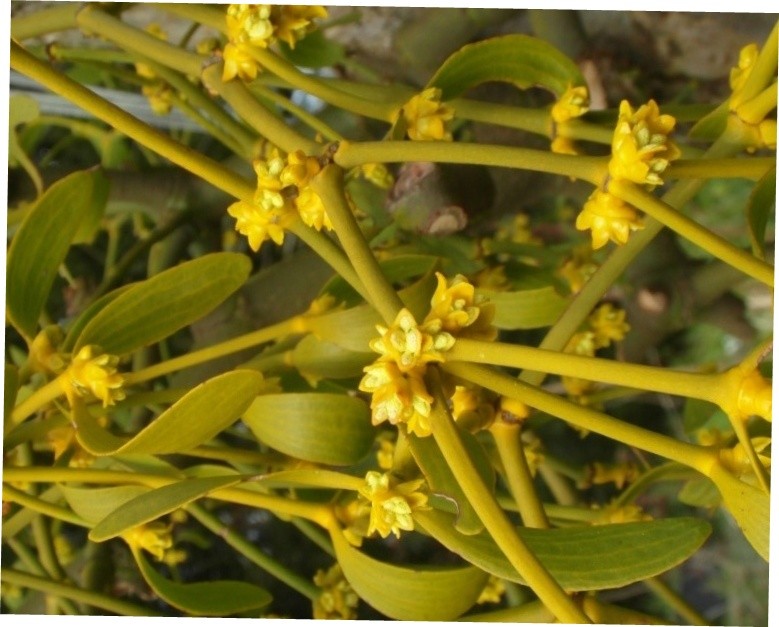Eastern mistletoe
(Phoradendron leucarpum leucarpum)

Description
Phoradendron leucarpum leucarpum, commonly known as Eastern mistletoe, is a parasitic plant that belongs to the Santalaceae family. This plant is native to North America and can be found throughout the eastern and central regions of the continent. It is a fascinating plant with a rich history and many unique characteristics that make it an interesting topic for discussion. Description: Phoradendron leucarpum leucarpum is a woody evergreen plant that can grow up to 3 feet in length. It has smooth, green stems that produce small, waxy leaves that are about 1 inch long. The plant produces small, greenish-yellow flowers that are borne on short stalks. These flowers are followed by round, white berries that are about 1/4 inch in diameter. Habitat: Eastern mistletoe is a parasitic plant that grows on a variety of host trees, including oak, hickory, and maple. It is most commonly found in deciduous forests, but can also be found in swamps and along rivers and streams. Range: Eastern mistletoe is native to North America and can be found throughout the eastern and central regions of the continent. Its range extends from southern Ontario to Florida, and from the Atlantic coast to Texas. Life Cycle: Eastern mistletoe is a hemiparasitic plant, which means that it obtains some of its nutrients from its host tree, but is also capable of photosynthesis. The plant produces seeds that are dispersed by birds, which feed on the berries and then excrete the seeds onto the branches of host trees. Once the seeds are deposited on a host tree, they germinate and send out a root-like structure called a haustorium, which penetrates the bark of the host tree and allows the mistletoe to draw nutrients and water from the host. The mistletoe grows and develops until it produces flowers and berries, which are then eaten by birds, continuing the cycle. Ecological Significance: Eastern mistletoe plays an important ecological role in the forest ecosystem. It provides a source of food and shelter for many species of birds, including the cedar waxwing, robin, and bluebird. The plant also serves as a habitat for insects and other small animals. In addition, the mistletoe can have a significant impact on the health and growth of its host tree, depending on the amount of mistletoe present and the tree species involved. Cultural Significance: Eastern mistletoe has a rich cultural history in North America. It has been used for medicinal purposes by Native American tribes for centuries. The plant was also an important symbol in Norse mythology, where it was associated with the goddess Frigga and was thought to have the power to bring good luck and fertility. Today, Eastern mistletoe is commonly used as a decoration during the holiday season, and is often associated with kissing traditions. Conclusion: Phoradendron leucarpum leucarpum, or Eastern mistletoe, is a fascinating plant with a rich history and many unique characteristics. It is an important part of the forest ecosystem, providing food and shelter for many species of birds and serving as a habitat for insects and other small animals. The plant has also played an important role in human culture and tradition for centuries. By learning more about Eastern mistletoe, we can deepen our understanding and appreciation of the natural world around us.
Taxonomic tree:







